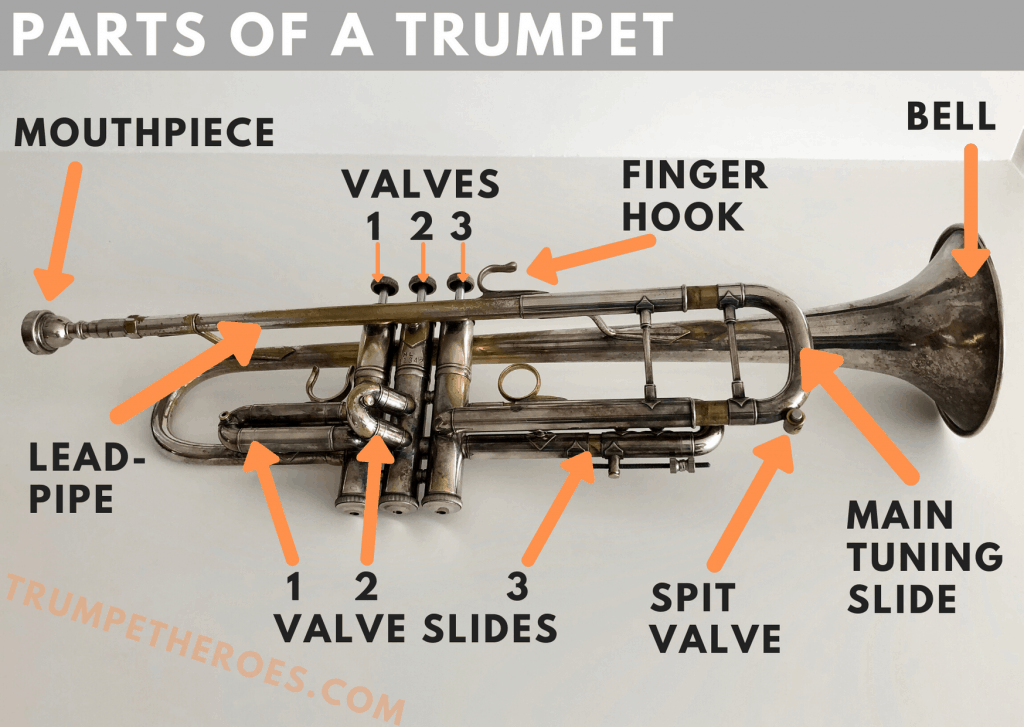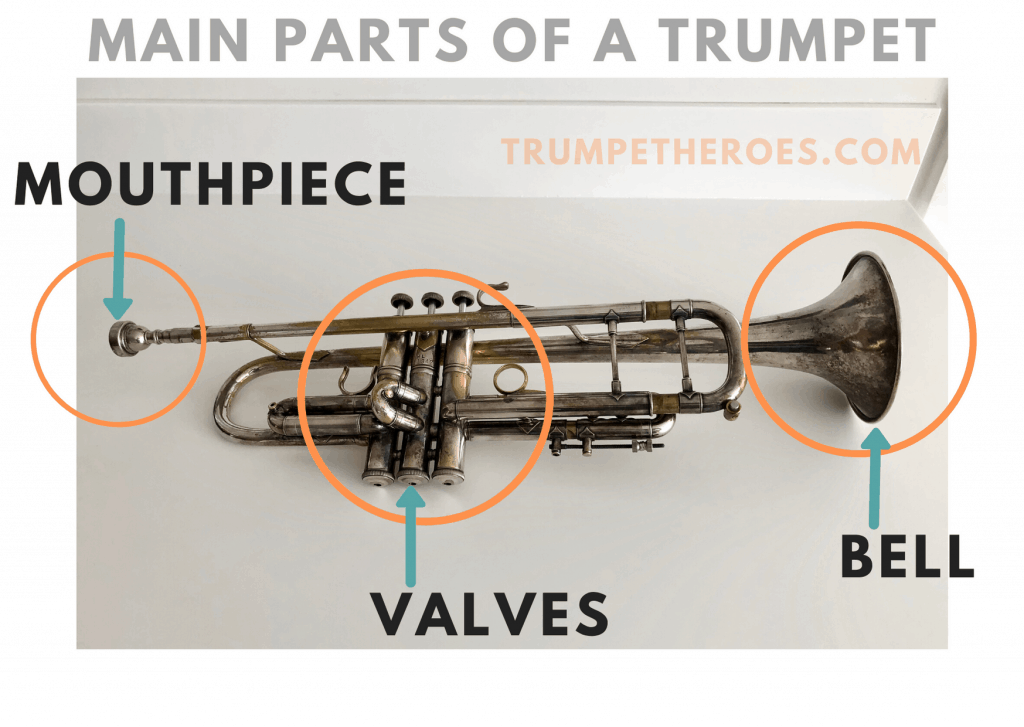Physical Address
304 North Cardinal St.
Dorchester Center, MA 02124
To clean a trumpet mouthpiece, rinse it with warm water and mild soap, using a mouthpiece brush to remove any built-up residue. Everyone who plays the trumpet knows the importance of a clean and well-maintained instrument.
While regular cleaning of the entire trumpet is essential, giving special attention to the mouthpiece is equally crucial. The mouthpiece is a vital component of the trumpet, as it directly affects the player’s sound and performance. Over time, dirt, grime, and residue can accumulate on the mouthpiece, affecting its performance and hygiene.
Cleaning the mouthpiece regularly not only improves its longevity but also ensures optimal sound quality. We will discuss the step-by-step process of cleaning a trumpet mouthpiece, providing you with tips and techniques to maintain it in pristine condition.

Credit: trumpetheroes.com
Keeping your trumpet mouthpiece clean is essential for maintaining its performance and prolonging its lifespan. Follow this comprehensive step-by-step guide to ensure that your trumpet mouthpiece remains in optimal condition for playing.
To start the cleaning process, carefully remove the mouthpiece from the trumpet. Gently twist and pull it upwards, ensuring not to apply excessive force that could damage the instrument.
Before proceeding with the actual cleaning, give the mouthpiece a pre-cleaning rinse to remove any loose particles and debris. Run it under warm water, ensuring that the water pressure is not too high. This will help loosen any residue and make the subsequent cleaning more effective.
Prepare a cleaning solution by mixing equal parts warm water and mild dish soap or trumpet cleaning solution. Make sure the solution is not too hot, as it could damage the mouthpiece. Fill a clean basin or sink with the solution, ensuring there is enough to fully submerge the mouthpiece.
Submerge the mouthpiece in the cleaning solution and use a soft-bristled brush specifically designed for cleaning trumpet mouthpieces. Gently scrub the inside and outside of the mouthpiece, paying extra attention to the shank area and the cup. This will remove any accumulated dirt and grime.
After brushing, thoroughly rinse the mouthpiece under warm running water to remove any remaining cleaning solution. Use your fingers to ensure all residues are completely washed away.
To ensure the mouthpiece is completely dry, use a clean lint-free cloth or paper towel to carefully dry the exterior. For the interior, insert a mouthpiece brush wrapped in a clean cloth or towel to absorb any moisture. Gently twist the brush inside the mouthpiece to remove any remaining water. Allow the mouthpiece to air dry in a well-ventilated area, ensuring it is completely dry before reassembling it with the trumpet.
By following this step-by-step cleaning guide, you can maintain the cleanliness of your trumpet mouthpiece and ensure optimal performance every time you play.

Credit: www.amazon.com
When it comes to maintaining your trumpet, proper cleaning of the mouthpiece is essential. A clean mouthpiece not only improves the sound quality but also prevents the buildup of bacteria and debris. In this section, we will explore three effective deep cleaning techniques that will leave your trumpet mouthpiece sparkling.
One great way to deeply clean your trumpet mouthpiece is by using a vinegar soak. Vinegar is a natural cleaner that effectively removes tarnish and bacteria. Here’s how to do it:
Another effective method for deep cleaning your trumpet mouthpiece is by creating a baking soda paste. Baking soda acts as a gentle abrasive that helps remove stubborn stains and residue. Here’s how you can use it:
If you’re looking for a professional-grade cleaning method, an ultrasonic cleaner can be a highly effective option. This device uses ultrasonic waves to remove dirt, grime, and bacteria from the nooks and crannies of your trumpet mouthpiece. Follow these steps:
| 1. | Fill the ultrasonic cleaner with warm water. |
| 2. | Add a mild cleaning solution or dish soap to the water. |
| 3. | Place the trumpet mouthpiece in the cleaner’s basket. |
| 4. | Turn on the ultrasonic cleaner and let it run for the recommended time, usually around 5-10 minutes. |
| 5. | Remove the mouthpiece from the cleaner and rinse it thoroughly with warm water. |
| 6. | Dry the mouthpiece carefully before attaching it back to your trumpet. |
By utilizing these deep cleaning techniques, you can ensure that your trumpet mouthpiece is always in top-notch condition, resulting in better sound and improved longevity. Regular cleaning not only maintains the hygiene of your instrument but also enhances your playing experience. So don’t overlook the importance of a clean trumpet mouthpiece!

Credit: trumpetheroes.com
Clean a trumpet mouthpiece using warm, soapy water and a mouthpiece brush.
Yes, you can use dish soap on a trumpet mouthpiece. It effectively removes dirt and grime.
Clean your trumpet mouthpiece regularly to maintain optimal performance. It is recommended to clean it after each use with warm water and a mild soap. Ensure all debris is removed, including saliva and dirt. Regular cleaning will improve sound quality and prevent bacterial build-up.
To remove tarnish from a brass mouthpiece, use a mixture of vinegar and salt. Apply the mixture to the tarnished areas and scrub gently with a cloth. Rinse with water and dry thoroughly.
Cleaning your trumpet mouthpiece at least once a week is recommended to maintain optimal performance and hygiene.
To clean your trumpet mouthpiece, soak it in warm soapy water, use a mouthpiece brush, rinse thoroughly, and let it air dry.
Taking proper care of your trumpet mouthpiece is essential to maintain its quality and performance. By following these simple steps and regular cleaning routine, you can ensure a clean and hygienic mouthpiece for the best playing experience. Remember to use gentle cleaning products and avoid harsh abrasives.
With a clean mouthpiece, you can unlock your trumpet’s full potential and keep playing beautiful music for years to come. Happy cleaning!